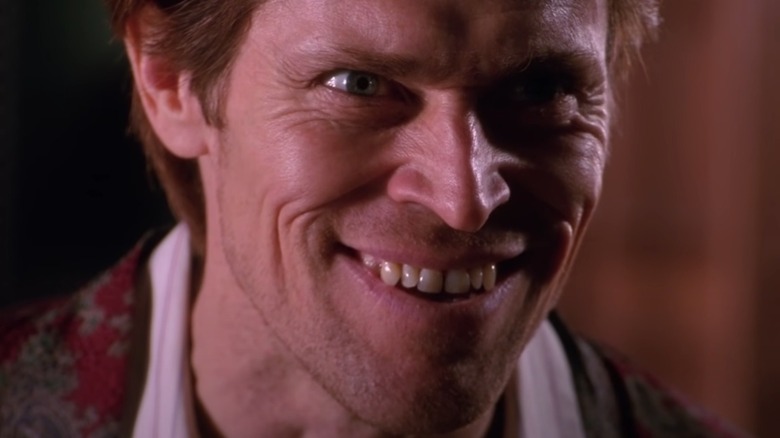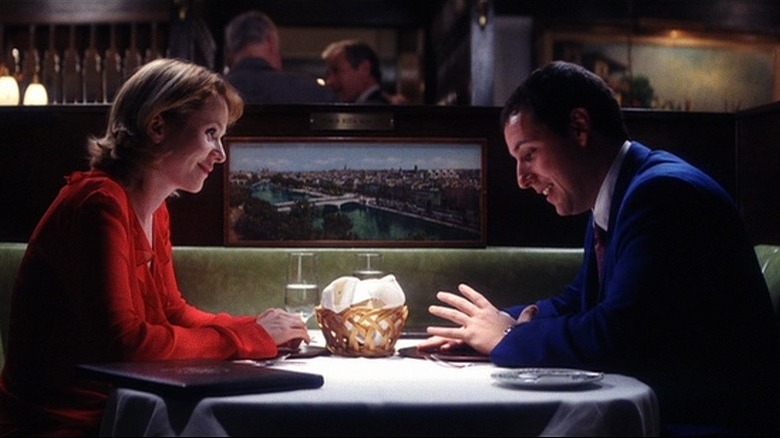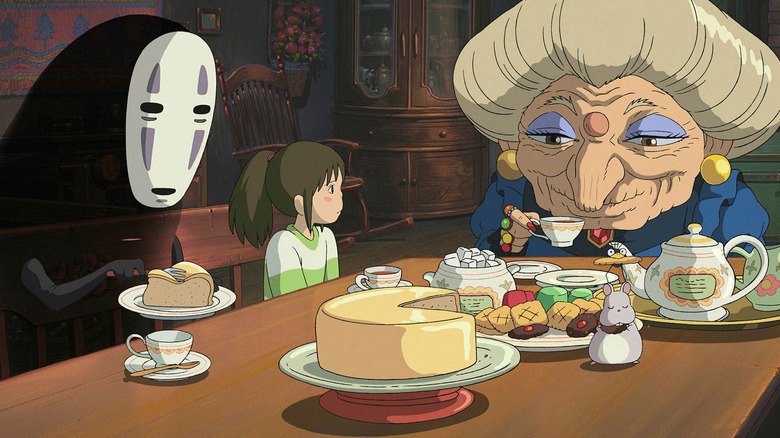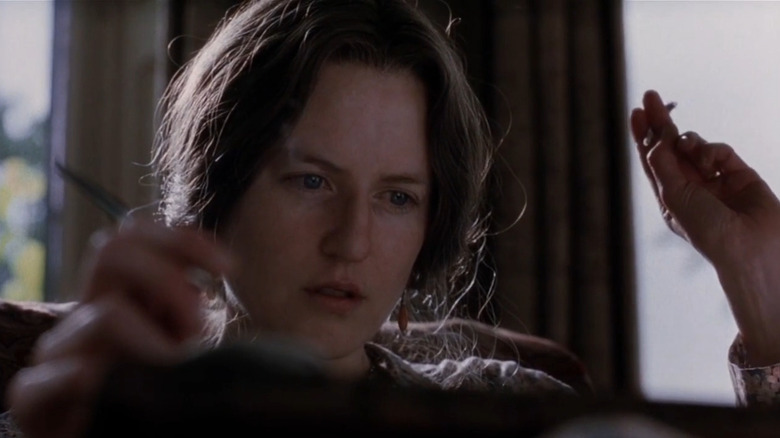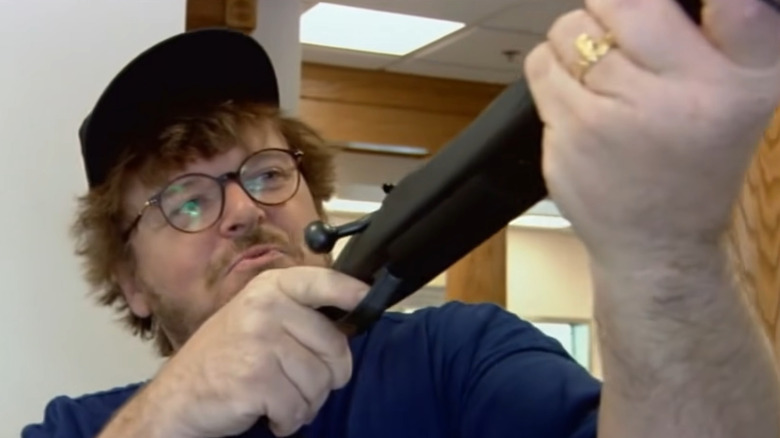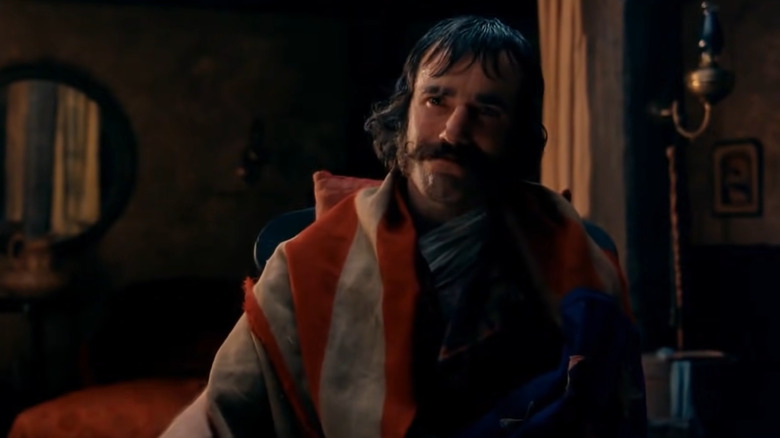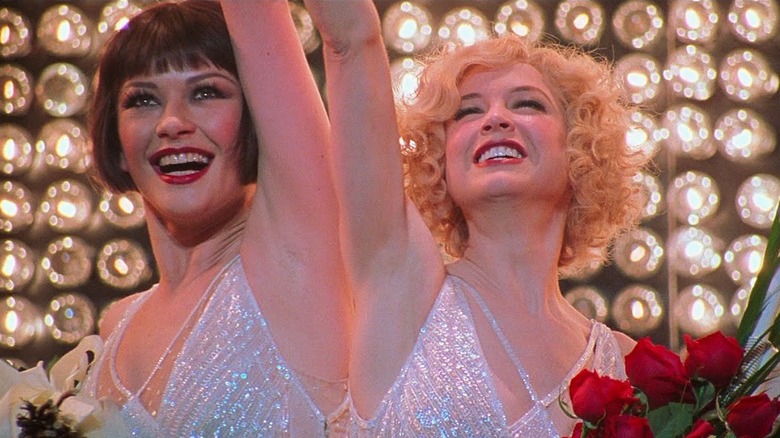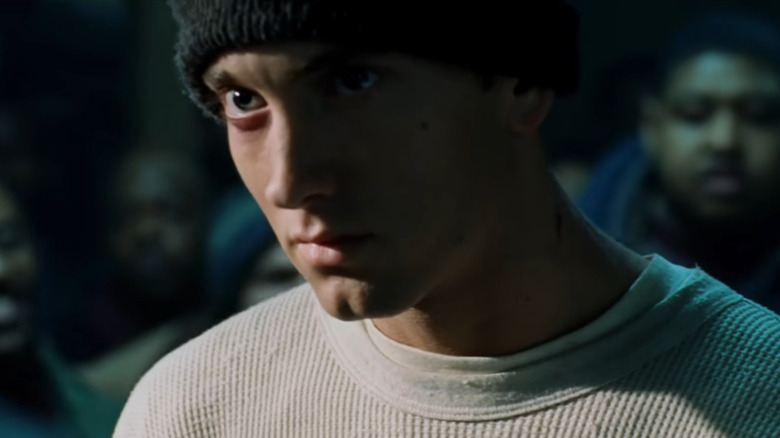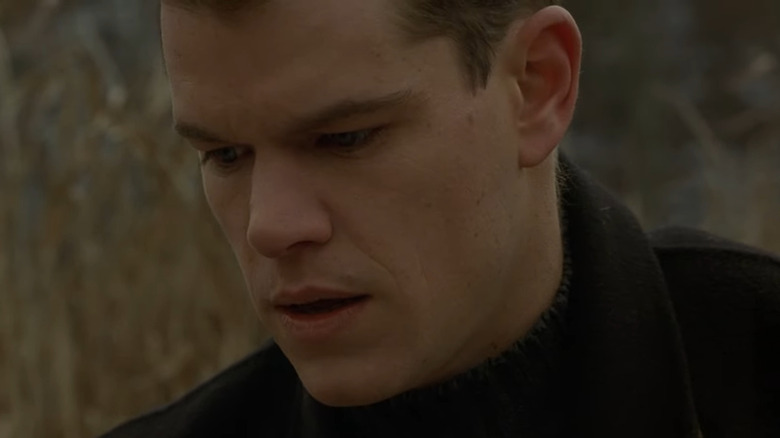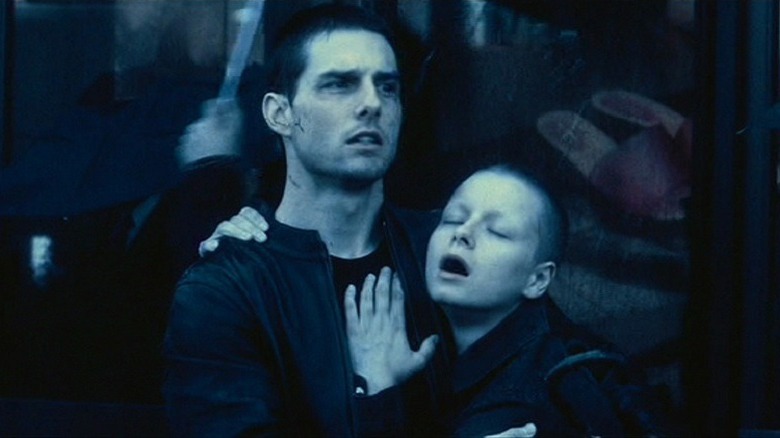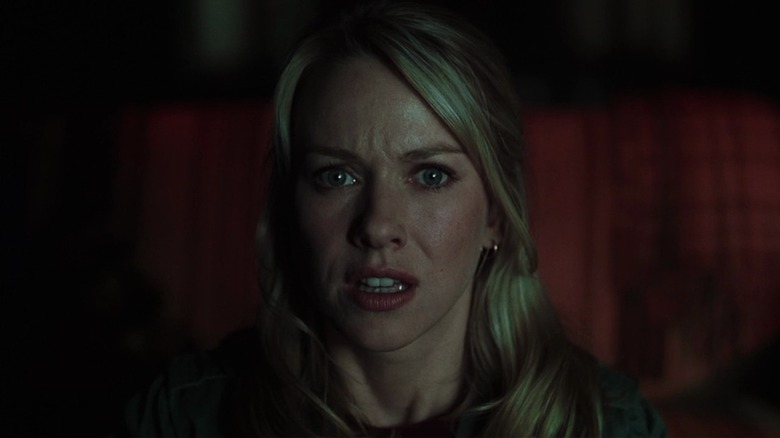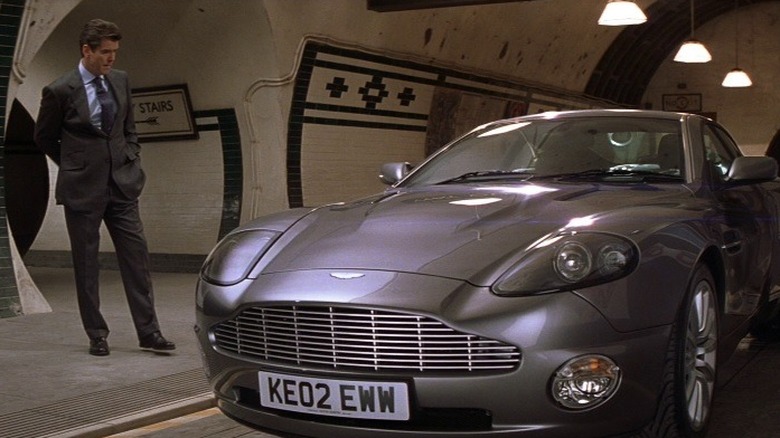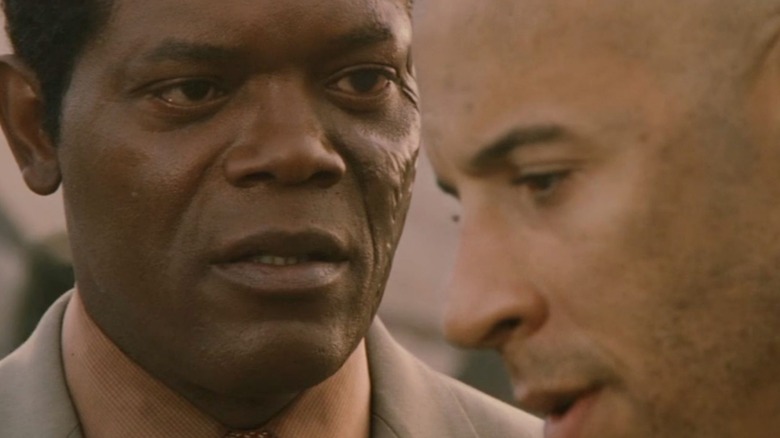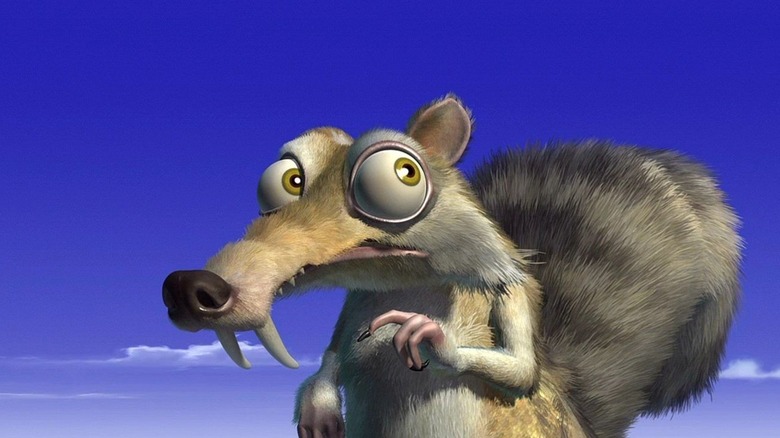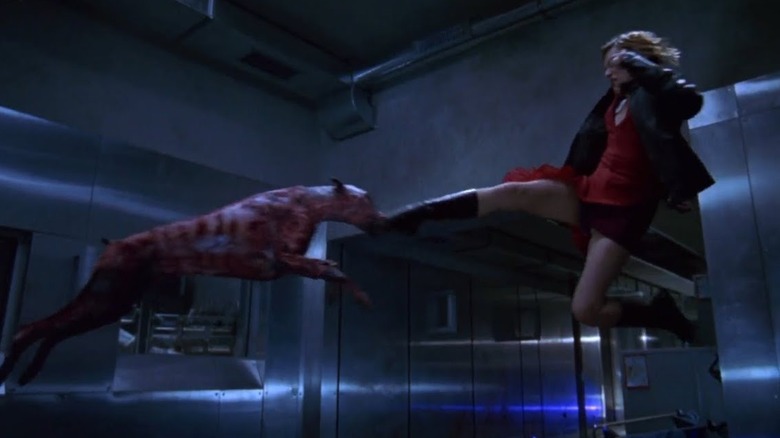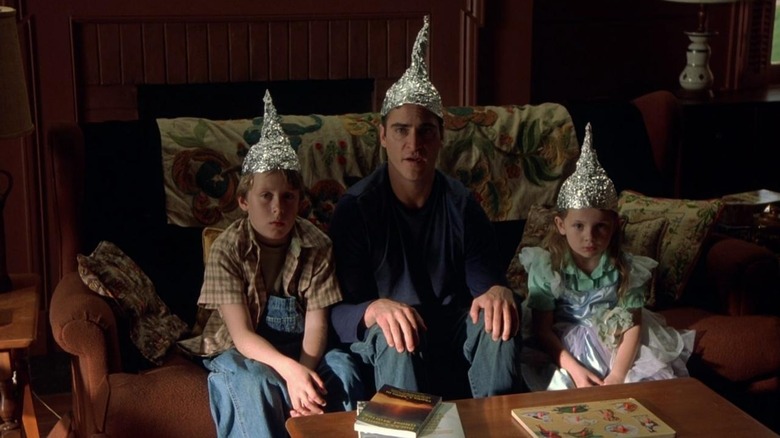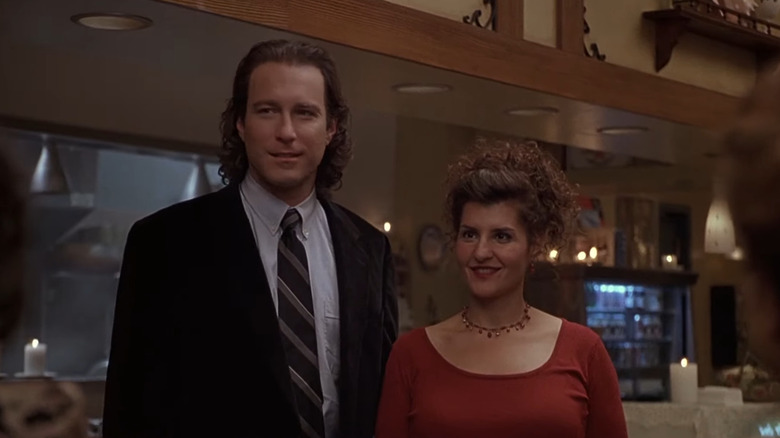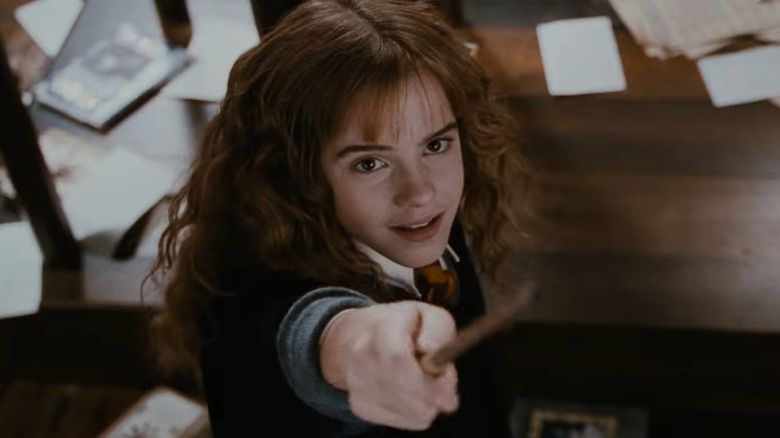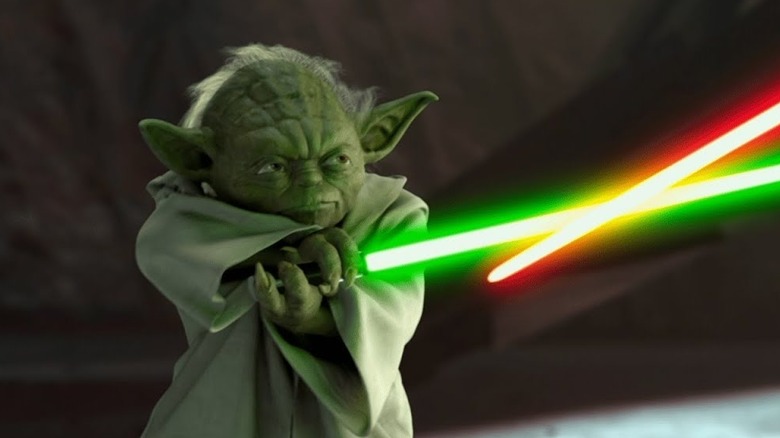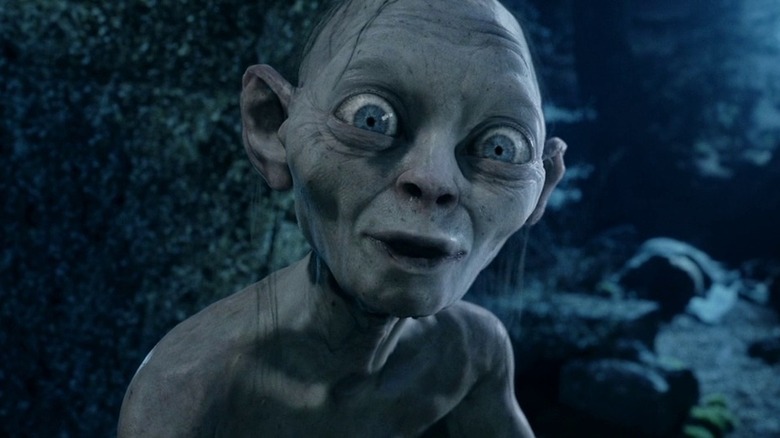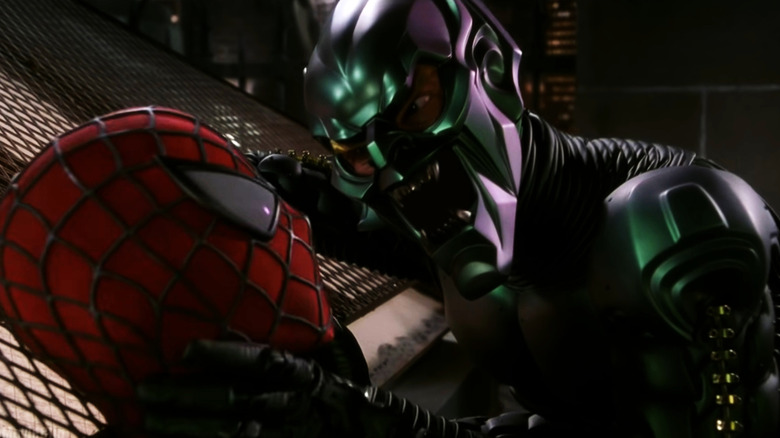20 Movies That Turn 20 In 2022
The year 2002 will be remembered for many pop culture milestones. "The Osbournes" premiered on March 5, 2002, kicking off the "celebrities are just like us — but rich" reality TV subgenre. "American Idol" premiered on June 11, 2002, kicking off "regular people aren't just like us — they're super talented" phase of pop music. There was the rise of low-rise jeans, the fall of Britney Spears and Justin Timberlake's relationship (they broke up before every celebrity couple had to have a nickname), and of course, the defining event of the year, maybe the decade — Ben Affleck was named "Sexiest Man Alive" by People magazine. It was a strange time.
It was also a memorable year at the multiplex, filled with cinematic milestones and box office blockbusters. Heck, the year managed to contain films from four of the greatest franchises of all time. We're going to look back on 20 of the most memorable films of 2002 and discuss why they stand the test of time. Some were historic hits, some won awards, but all of them were millennial movie milestones during a time in our lives when we didn't have to worry about retirement accounts and meal prepping. Frankly, we were surprised that all of these major releases came out during the same year, and you will be too. Ready to feel old? Pop on your nostalgia-tinted glasses because here are 20 movies that turn 20 in 2022!
Punch-Drunk Love
"Wait, Adam Sandler can act?!" was the universal reaction to Paul Thomas Anderson's "Punch-Drunk Love" back in 2002. Sandler had spent the previous 10 years making a living (actually, a fortune) playing stupid men who spoke in silly voices and who clearly had severe anger management issues. Heck, he would literally star in a movie called "Anger Management" in 2003. Meanwhile, Anderson had won critical bona fides, though no Academy Awards, as the auteur behind "Boogie Nights" and "Magnolia." So Anderson selecting Happy Gilmore to star in his next movie was a bit surprising, to say the least.
But Anderson saw something in Sandler — namely his propensity for playing immature men with out-of-control rage. While Sandler had played his rage for laughs in blockbuster comedies, Anderson played it for pathos in this little-seen but much-loved romantic comedy. In the film, Sandler stars as a shy, lonely man whose romance with one of his sister's coworkers (Emily Watson) is threatened by an extortionist played by the late Philip Seymour Hoffman. We would have never thought Sandler could steal a movie from Watson and Hoffman before 2002, but there you go. After 20 years, and following acclaimed performances in movies like "Uncut Gems," saying "Adam Sandler can act" is no longer a hot take.
Spirited Away
"Spirited Away" may be the most celebrated movie in master animator Hayao Miyazaki's entire career, which is really saying something. It held the title of being Japan's highest-grossing movie of all time for nearly 20 years — until it was overtaken by "Demon Slayer" in 2020 – with a $304 million gross in Japan alone, according to The Numbers. While only $10 million of its massive $383 million worldwide haul came from North America, it did have its supporters in the United States, as "Spirited Away" ran away with the Oscar for Best Animated Feature at the 75th Annual Academy Awards.
In the film, a 10-year old girl must rescue her parents from a world of spirits, demons, giant babies, and talking frogs after they are transformed into pigs. Okay, so it's not exactly "The Lion King" as far as mainstream animated storytelling is concerned. "Spirited Away" is a "swing for the fences" celebration of the imagination by one of the most creative minds in all of cinema history, let alone animation history. 20 years later, the film is still as fresh and fun as it was in 2002.
The Hours
Hard as it is to believe now, Nicole Kidman spent the start of her Hollywood career being known as "Tom Cruise's gorgeous wife who starred in 'Batman Forever.'" In 1995, Gus Van Sant cast her as a megalomaniacal meteorologist in "To Die For," and Kidman proved she was a great actress. Six years later, Stephen Daldry cast her in as Virginia Woolf "The Hours," and Kidman proved she may be one of our best.
"The Hours" focuses on three women living in different eras — a de-glammed Kidman with a fake nose in the early 1920s, Julianne Moore as a pregnant housewife in an unloving marriage in the 1950s and Meryl Strep as a New Yorker with a friend dying of AIDs in the present day — whose lives intertwine around their relationship with Woolf's 1923 novel "Mrs. Dalloway." There may have been a time when Nicole Kidman starring in a movie with Moore and Streep may have seemed like a game of "which one of these is not like the other?" However, Kidman not only stole the movie, she took home Oscar gold. Meanwhile, Moore received a nomination, while Streep didn't receive any noms (one of the few times that has ever happened in history). "The Hours" may have been Nicole Kidman's finest hour, firmly establishing her as one of Hollywood's best.
Bowling for Columbine
Gen Zers may not believe this, but there was a time when people actually paid to go to the movie theater to watch a documentary — they didn't just tune into the latest Netflix limited series. And a lot of those documentary moviegoers went to see movies made by Michael Moore. The provocateur (some would say "propagandist," depending on your political bent) still wears the crown — or perhaps we should say "ball cap"— for directing the highest-grossing documentary of all time, "Fahrenheit 9/11," which earned $119 million in 2004. That beat his own record set two years earlier with "Bowling for Columbine" in 2002.
"Bowling for Columbine" finds Moore exploring the controversial topic of firearms in the United States, with a specific focus on the tragic Columbine shooting in 1999. The documentary is most famous for Moore's interview with Hollywood actor Charlton Heston, then-president of the National Rifle Association, as well as Moore's acceptance speech after he won Best Documentary Feature at the Academy Awards. However one feels about Moore's methods, there's no denying he got attention back in the day. His last five movies have made less combined than "Bowling for Columbine" made worldwide, but in 2002, Michael Moore was just beginning his ascent as the king of the documentary.
Gangs of New York
"Somebody give Martin Scorsese his Oscar already!" might as well have been the tagline for 2002's "Gangs of New York." Which isn't to say "Gangs Of New York" isn't good, just that it's arguably Scorsese's most Oscar-bait movie ever. Period costume drama? Check. Daniel Day-Lewis in a scenery chomping performance? Check. An original song tie-in by U2? Check. An aggressive campaign from the now-disgraced former Miramax chief, Harvey Weinstein? Check. And it still didn't win! Crazy.
While "Gangs of New York" didn't nab a single Oscar, it kicked off the most prolific partnerships in motion picture history — Martin Scorsese and Leonardo DiCaprio. "Gangs of New York" was the first of six (and counting) collaborations between Scorsese and DiCaprio, including the movie that finally won Scorsese his Oscar, "The Departed." We'd say their motion picture partnership has turned out pretty well, which is a good thing, as DiCaprio actually turned down the role of Anakin Skywalker in "Attack of the Clones," starring in "Gangs of New York" instead (per Vanity Fair). While the movie itself isn't either of their best, it did start their cinematic bromance that continues to this day.
Chicago
The movie musical has been declared dead only to be brought back to life more times than Frankenstein or Keith Richards. Hollywood loves a comeback story, especially whenever it's the comeback of one of cinema's greatest genres. "Chicago" falls in with this tradition, as one of only 10 musicals to have won Best Picture at the Academy Awards, as well as the most recent musical to do so. And by recent, we mean "20 years ago."
Based on one of the longest-running musicals in Broadway history, "Chicago" stars Renée Zellweger as Roxie Hart, a married Chi-town chorus girl who finds herself on death row after murdering her lover. He had it coming apparently. Now in the slammer, Hart competes in a "Cell Block Tango" with another murderous chorus girl, Velma Kelly (Catherine Zeta-Jones in an Oscar-winning performance), vying for the attention of the press and the greedy attorney Billy Flynn. And all that jazz. "Chicago" was a big hit on Broadway and at the box office, earning $306 million worldwide, back when winning Best Picture actually mattered at the box office. Not bad, but not enough to bring the movie musical back to prominence as a top genre.
8 Mile
Eminem joined the Rock and Roll Hall of Fame in 2022. In 2002, he starred in one of the pop culture touchstones that got him there, "8 Mile." What made "8 Mile" so memorable? Do you have to ask? Quick, name the first Eminem song you can think of. Chances are, you thought of "Lose Yourself." The song is the anthem at the heart of "8 Mile," and in addition to being featured during the Super Bowl LVI halftime show in 2022, it won Eminem an Academy Award for Best Original Song in 2003.
Eminem was already world famous by this point, following "The Marshall Mathers LP" in 2000, his third studio album and his second with Dr. Dre, which featured such hits as "The Real Slim Shady," "Stan," and "The Way I Am." However, "8 Mile" shot him into another level of stardom. The film is an auto-biopic of sorts, starring Eminem as a fictionalized version of himself, the up-and-coming rapper Jimmy Smith Jr., aka B-Rabbit, who dreams of escaping Detroit and its confining city limit, the 8 mile. Oh, and mom's spaghetti. Not every musician transitions from music to movies, but Eminem's star power propelled "8 Mile" to a $51 million opening weekend and $245 million worldwide on a $41 million budget.
The Bourne Identity
You may not believe it, but there was a time when action movies weren't edgy, gritty, and realistic — when the main hero wasn't a self-loathing and self-reflective person but a wise-cracking killing machine who actually enjoyed doing away bad guys while dropping gloriously cheesy one-liners (i.e. Arnold Schwarzenegger's entire career). That changed with "The Bourne Identity." While it only made $214 million worldwide (more than $200 million less than "Die Another Day"), the shoot-'em-up disguised as a grown-up drama established the groundwork for the modern action movie that continues to this day.
"The Bourne Identity" was also Matt Damon's first turn in the role that has largely defined his career, novelist Robert Ludlum's amnesia-stricken super agent. Damon was a far cry from the musclebound, mountain-sized action heroes of the 1980s and 1990s. Damon's casting was so fresh because he wasn't an action hero but an actor, a thespian without 24-inch biceps. The four-film, Damon-led "Bourne" franchise (not counting "The Bourne Legacy," starring Jeremy Renner) has made $1.3 billion worldwide. But the series' true legacy is how it changed action cinema for the next 20 years.
Minority Report
Few movie stars have had as impressive a run at the box office as Tom Cruise did between 1992's "A Few Good Men" and 2006's "Mission Impossible III." According to The Numbers, 12 of Cruise's 14 films during this timespan made at least $100 million at the domestic box office. The only holdouts were Stanley Kubrick's cerebral, scandalous swan song "Eyes Wide Shut" and Paul Thomas Anderson's epic ensemble "Magnolia." Heck, even "Vanilla Sky" made $100 million! So given Cruise was on an unprecedented hot streak, it only made sense (and cents) to pair him with the highest-grossing director of all time, Steven Spielberg.
However, even in 2002, "Minority Report" wasn't a premise that screamed "marketable." It was a dystopian sci-fi thriller based on a story by Philip K. Dick about cops from the future who stop crimes before they are committed. If "Minority Report" were released in theaters today it would bomb, as even the 2015 TV show was canceled after just one season. But the fact it made $358 million worldwide just goes to show how much moviegoers were more interested in heady sci-fi in 2002 — and how 20 years ago Tom Cruise could do no wrong.
The Ring
"Before you die, you see the ring." Despite that ominous premise, a lot of people saw "The Ring" in 2002. The horror flick opened to $15 million on October 18, perfectly fine for its $48 million budget, but it actually earned more over its next two weekends, eventually crawling like a black-haired creepy girl out of a water well to earn a flat-out fantastic $129 million domestic and $248 million worldwide. How did it do it? No joke, "The Ring" was really scary.
A remake of the Japanese movie "Ringu," "The Ring" kicked off the Japanese horror (J-horror) craze that dominated the decade, which included such insomnia-inducing flicks as "The Grudge" ("Ju-On") and "Pulse" ("Kairo"). "The Ring" is about a secret VHS video tape (take a second to look that up if you need to) featuring the titular ring that kills you seven days after watching the video. How? Naturally, because a cursed little girl crawls out of the TV to kill you. "The Ring" was Naomi Watts' first big star-turn after "Mulholland Drive" got her noticed by serious cineastes, as well as the third film from director Gore Verbinski, who would go on to find even greater fame and fortune as director of the "Pirates of the Caribbean" trilogy.
Die Another Day
With its grim, gritty, realistic take, "The Bourne Identity" helped usher in a new era of action cinema in 2002. Meanwhile, "Die Another Day" helped kill the old era. Ironically, this is despite the fact that "Die Another Day" made $217 million more than "The Bourne Identity" ($431 million vs. $214 million). In fact, at that point "Die Another Day" was the highest-grossing film in the James Bond franchise by nearly $100 million. Yet "Die Another Day" not only signaled the end of the "over-the-top" action movie, but it was also the end of Pierce Brosnan's record-breaking run as James Bond.
What happened? It was just too much. Specifically, James Bond drove an invisible car to escape a satellite that was shooting the sun's rays at him. Okay, then. While that sounds par for the course for the "Fast and Furious" franchise today, it was a bit divorced from reality for 007 in 2002, a year after 9/11 and with the war in Afghanistan just getting started. In a rare case of Hollywood producers quitting while they were ahead, the filmmakers looked at the dismal response for "Die Another Day" and changed course, switching gears from invisible cars to the grim, gritty, and realistic take starring Daniel Craig.
xXx
Vin Diesel's movie star career was in hyperdrive following the one-two punch of 2001's "The Fast & The Furious" ($206 million worldwide) and 2002's "xXx." That latter film promised a "a new breed of secret agent" and delivered the goods. Diesel played Xander Cage, an extreme sports athlete — basically someone who snowboards but after jumping out of a plane — who is recruited by Samuel L. Jackson to join a secret government team (gee, that sounds familiar) as a super spy!
It was an awesome concept and sooooo early 2000s. Mix "xtreme sports" (we cut the "e" because it wasn't "xtreme" enough) with over-the-top, James Bond-style action and you have a $141 million domestic and $267 million worldwide gross, even more than "The Fast and the Furious." Everybody was into Diesel's movies in the early 2000s except, well, Diesel. He ditched the "Fast" franchise for eight years (minus a cameo in 2006's "Tokyo Drift") and the "xXx" series for 15 years to focus on his true passion, the "Riddick" series. Whatever, dude. Diesel's return in 2016's "xXx: Return of Xander Cage" earned $345 million worldwide (almost more than all of the "Riddick" movies combined), while the "Fast" franchise has made, well, a lot.
Ice Age
True story, "Ice Age" is one of the highest-grossing animated film franchises, with $793 million domestic and $3.2 billion worldwide across five films, for a per-film average of $641 million. Pixar may get more awards, Disney may sell more princess dresses, and the Minions may be on more Facebook memes posted by baby boomers, but "Ice Age" is a heavy hitter in the animation sphere. And it all started in 2002.
Following Pixar's nearly decade-long run of dominance starting with "Toy Story," other movie studios were getting in on the animated action, as throughout the 2000s almost every CG-animated movie made money, most notably Dreamworks' "Shrek" series and 20th Century Fox's "Ice Age." Set roughly 18,000 B.C., "Ice Age" is about a wooly mammoth, a saber-toothed tiger, and a sloth who join forces to take care of a human baby. And along the way, we're also treated to the misadventures of Scrat, a squirrel-rat who just wants an acorn.
Simple enough, and enough to scrounge up $176 million domestically and $386 million worldwide. Alas, Disney closed Blue Sky Studios in 2021 (per Deadline) following their Fox purchase. But if there's one thing the Mouse House likes, it's money, so we're sure they'll thaw out "Ice Age" again eventually.
Resident Evil
"Resident Evil" seems like a franchise that has always existed (maybe that's because there have been 10 movies in 20 years). However, our research shows that the franchise started on March 15, 2002, when "Resident Evil" opened to $17 million on a $35 million budget, earning $40 million domestically and $103 million worldwide. What was the appeal? The same as the video games series it's based on. "Residential Evil" mixed scary, gory horror with blood-and-guts action — exactly what teenagers from every era enjoy. What more could you ask for? Well, besides purposeful plot construction and fully formed characters ... but who cares about that? The movie has zombie dogs!
"Resident Evil" takes place in Raccoon City where an evil company known as the Umbrella Corporation operates a genetics laboratory called "the Hive." However, in the OG lab leak, a virus that mutates people into flesh-eating monsters is released, and a team of commandos must stop the spread — not with N95 masks and Netflix binges but with fully automatic, high-caliber weapons. That basic setup (and box office gross) was enough to justify a sequel ... a lot of them. 10 films and $1.2 billion worldwide later, the "Resident Evil" series stands as one of the highest-grossing horror film franchises ever and the highest-grossing franchise based on a video game.
Signs
M. Night Shyamalan was the Jordan Peele of his day, an auteur director whose horror films could make $200 million easily based on his name above the title alone. His crowning achievement was his third film and his first foray into horror, "The Sixth Sense," which earned $672 million worldwide and an Oscar nomination for Best Picture. Shyamalan never quite reached those same heights again, but his closest came in 2002 with "Signs." While "The Sixth Sense" was about the supernatural, "Signs" was about the spiritual ... and aliens. Mostly, aliens.
The movie is about an impending alien invasion, told from the POV of a widowed former pastor turned rural farmer named Rev. Graham Hess, played by Mel Gibson, who's living with his children and his failed baseball player brother, played by Joaquin Phoenix. Rev. Hess suspects something extraterrestrial is afoot when crop circles start showing up in his corn field. We won't spoil the movie (Shyamalan's twists are part of the fun ... mostly), except to say "Signs" scared up $227 million domestic and $408 million worldwide, landing it in the top six domestically for 2002 and becoming Mel Gibson's biggest hit as an actor.
My Big Fat Greek Wedding
If you want an example of just how different the movie marketplace was 20 years ago, just look at the top 10 biggest box office hits both domestically and worldwide. Yes, you'll find your usual assortment of big-budget sequels, action pics, and animated family flicks, but there's one movie stands out like a sore thumb — "My Big Fat Greek Wedding." Yep, one of 2002's biggest box office hits was an independent romantic comedy headlined by an unknown, Nia Vardalos, who like Sylvester Stallone with "Rocky," wrote her own starring role. With the rise of streamers and the dominance of franchises at the multiplex, we can't imagine that happening ever again. Honestly, we're shocked it happened 20 years ago.
"My Big Fat Greek Wedding" struck a nerve with its simple story of a Greek-American woman who must plan a wedding with her non-Greek fiancé, much to the chagrin of her very Greek family. "My Big Fat Greek Wedding" opened modestly, with $597,362 (just 0.2% of its total gross) but built an audience, eventually earning $241 million domestically and $368 million worldwide, a massive profit on its $5 million budget. Remarkably, it never made more than $12 million in a single weekend and is the second highest-grossing movie to never finish number one. Of course, "My Big Fat Greek Wedding" did finish the year number five at the domestic box office and number nine worldwide.
Harry Potter and the Chamber of Secrets
The "Harry Potter" series is the highest-grossing literary adaptation at the box office, with $2.8 billion domestically and $9.5 billion worldwide (including the "Fantastic Beasts" films). Approximately, $875 million of that came from "Harry Potter and the Chamber of Secrets" in 2002. That is actually on the low end for the "Harry Potter" franchise, as it's the second lowest-grossing of the series, excluding the "Fantastic Beasts" spinoffs. Still, "Harry Potter" is big money, so it was enough to land the second film in the franchise at number four at the domestic box office and number two worldwide for the year.
The second installment in the series finds Harry and his pals, Hermione and Ron, unraveling a prophecy while fighting a dark force that's paralyzing people at Hogwarts' School of Witchcraft and Wizardry. Despite pulling in big numbers, "Harry Potter and the Chamber of Secrets" is one of the more forgettable films from the franchise, which probably has something to do with the fact it came out during such a jam-packed year. Make no mistake however, Warner Brothers needed a "Chamber of Secrets" to stash all the cash this movie made.
Star Wars: Episode II - Attack of the Clones
Ever since 1977 when "Star Wars: A New Hope" changed everything, a "Star Wars" movie topped the box office charts during every year that one was released — in 1977, in 1980, in 1983, and in 1999. That all changed in 2002 when "Star Wars: Episode II – Attack of the Clones" finished number two at the domestic box office and number four worldwide. What happened?
One, it came out less than two weeks after the history-making run (or should we say "swing?") of "Spider-Man," which made almost as much in its second weekend ($71 million) as "Attack of the Clones" made in its first ($80 million). Also, perhaps more importantly, "Attack of the Clones" just wasn't very good. "Star Wars: Episode I – The Phantom Menace" had already left a bad taste in moviegoers' mouths in 1999, and "Attack of the Clones" didn't buck the trend but continued it. Consequently, "Attack of the Clones" only made $302 million domestically and $645 million worldwide in its original run. However, that's still a hefty profit on a $115 million budget, more than enough for George Lucas to install a new pool or 10. But after 25 years of finishing at number one, "Attack of the Clones" brought the high-flying space saga back to earth.
The Lord of the Rings: The Two Towers
Peter Jackson managed to take J.R.R. Tolkien's epic fantasy trilogy, which had been scaring directors away for decades, and turn it into a $2.9 billion-earning, multiple Oscar-winning mega-franchise. However, while "The Fellowship of the Ring" launched the franchise in 2001 and "The Return of the King" won all the praise in 2003, "The Two Towers" tends to suffer from Middle-earth middle-child syndrome, sandwiched between those two pop culture giants in 2002. Make no mistake, "The Two Towers" was a massive success by every measure.
"The Two Towers" boasts the best reviews of the series according to Rotten Tomatoes, while its $342 million domestic gross landed number three in North America, while its $919 million total box office gross was number one worldwide. Plus, it also snagged two Oscars and a Best Picture nom. Besides dollars and gold, "The Two Towers" most lasting contribution to pop culture may be Gollum, specifically how he was brought to life. Rather than create a CG-character from scratch, Jackson and crew used motion-capture technology to map actor Andy Serkis' on-set movements to animate Gollum. The mo-cap method "changed CGI forever" according to Vulture, and it's since been used in everything from the MonsterVerse to "Avatar" to "Planet of the Apes."
Spider-Man
The movie business changed forever in 2002 because of one movie — "Spider-Man." Yes, "Superman" and "Batman" were both blockbuster franchises, with "Batman" especially changing the game by generating insane levels of hype and cementing the opening weekend as the mark of summer success. However, each of those franchises were isolated success stories that fizzled out after four films. Neither launched the superhero movie as its own genre. "Spider-Man" was a rising tide that lifted all ships, resulting in a comic book gold rush that continues to this day, with absolutely zero signs of slowing down.
Put simply, no "Spider-Man," no Marvel Cinematic Universe, no DC Extended Universe, no "Dark Knight" trilogy, none of it. If you love (or hate) the fact that superheroes are now the dominant genre across all levels of pop culture, you can thank (or curse) "Spider-Man." Shockingly, the world-famous wall-crawler had spent decades in development hell, as nobody was sure how to bring him to the big screen or if a big enough audience would even show up. They did. Oh boy, did they ever.
"Spider-Man" opened to $114 million, becoming the first movie to open above $100 million, and it kept swinging, finishing its historic run with $403 million domestic and $821 million. That was good enough for a third-place finish at the worldwide box office but solidly number one (by nearly $100 million) at the domestic box office. Many superhero movies have made more money since. In 2002, "Spider-Man" changed everything.
